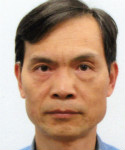| Biography | |
|---|---|
 Prof. Liming Lai Department of Agronomy, Agricultural Soil Research Center of Hetao Irrigation District, Hetao College, China |
|
| Title: Whether “salt leaching by irrigation (SLI)” model could support soil sustainability in Hetao Irrigation District, China? | |
| Abstract: Salt leaching by irrigation (SLI) is the irrigation model in the Hetao Irrigation District (HID), Inner Mongolia, China, which is an arid agricultural region that entirely depends on irrigation. However, little is known about the functions and attributes of the SLI model and the impacts of the SLI model on soil quality. The objectives of this study were to reveal the functions and attributes of the SLI model and evaluate the impacts of the SLI model on soil sustainability in the HID. This study used a mixed-method that included soil samplings, on-site investigations, in-depth interviews, and literature review. Results showed that the mean annual precipitation and mean daily temperature were 162 mm (1960-2010) and 9.06°C (1955-2015) in the HID. The Yellow River provided abundant water sources for the HID irrigation. The mean annual amount of water from the Yellow River from 1986 to 2015 for the irrigation was 4.895 billion m3. The HID irrigation capacity is ~680,000 ha. The SLI model included 4 attributes: over-basin-irrigation, land leveling and shrinking, plastic film mulching, and vertical movement of irrigation water. The SLI model can alleviate soil salinization by leaching salts in topsoil but increase fertilization rates due to leaching nutrients in soils. Mean SOM and pH values in the HID had a slightly increasing trend over the past three decades. The area of salinization lands in the HID had a decreasing trend from 1978 to 2014. The groundwater tables in the HID declined from 1968 to 2016. The irrigation water amount from the Yellow River had a reducing trend over the years. The precipitation was stable, and the temperature had an increasing trend over the years. These findings indicate the SLI model is necessary for the HID to control soil salinization and preserve soil moisture, but the model could result in soil nutrient losses. The SLI model could generally support soil sustainability under the existing crop-soil system in the HID. Keywords: Salt leaching; irrigation; soil sustainability; SOM; pH; Hetao Irrigation District (HID)
| |
| Biography: Liming Lai, Ph.D., Professor, Agronomy Department, Hetao College, Bayannur, Inner Mongolia, China. His research interests are the soil assessment and amendment and the impacts of agricultural production activities on soil and the environment. His teaching courses include Soil Geography, Soil Amendment, and Applied Statistics. He received a Ph.D. in soil science at South Dakota State University in the USA and worked there for 10 years. He participated in 2 scientific research projects of the US Department of Agriculture and the Department of Energy and 4 projects of South Dakota State, USA. Now, he is a principal investigator for 2 projects of the Inner Mongolia Autonomous Region and 3 projects of the Bayannur City and Hetao College (the objectives of these projects were to investigate agricultural soils in the Hetao Irrigation District of Inner Mongolia from different aspects). He published 14 SCI papers and delivered oral presentations at several international conferences in China and the USA. He has certain attainments in soil science and agricultural activity impacts on soil and the environment. He has been invited by the English academic journals to review more than 30 papers. | |
